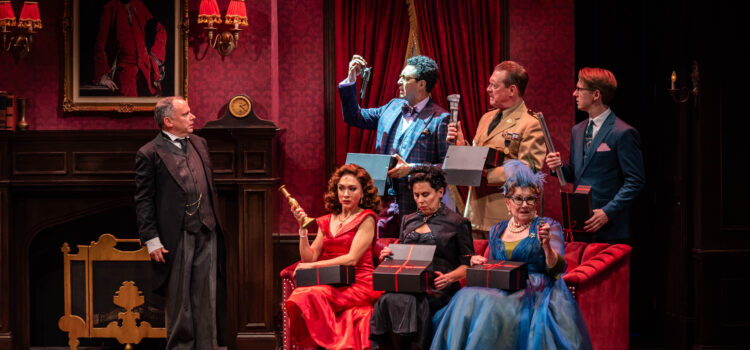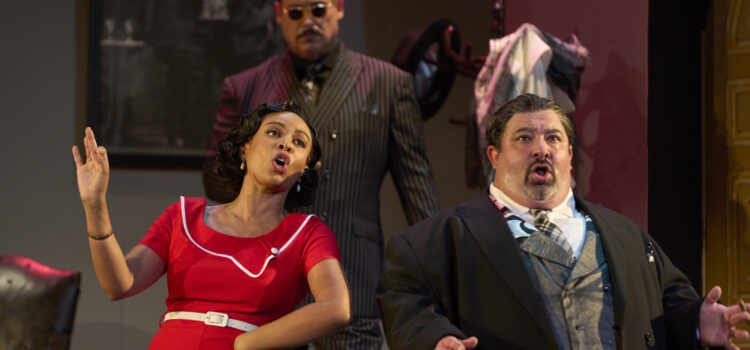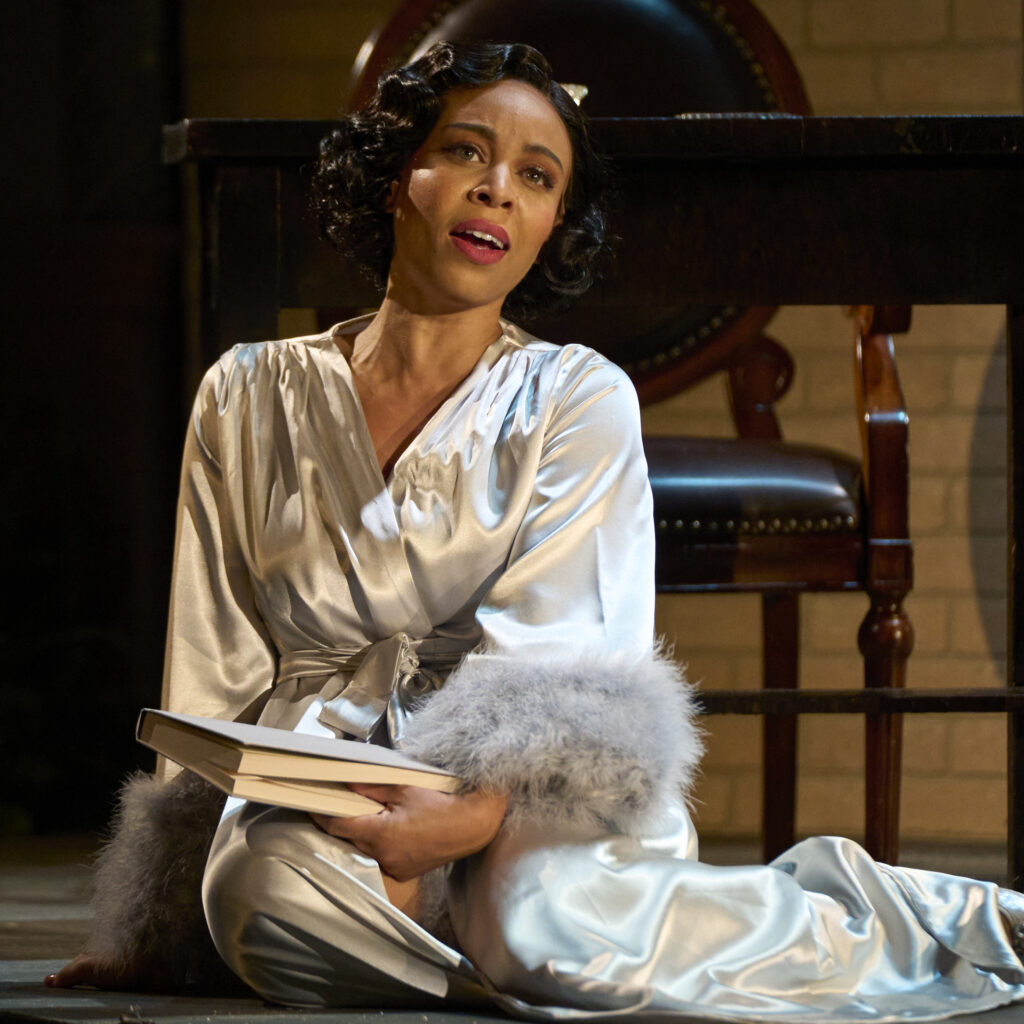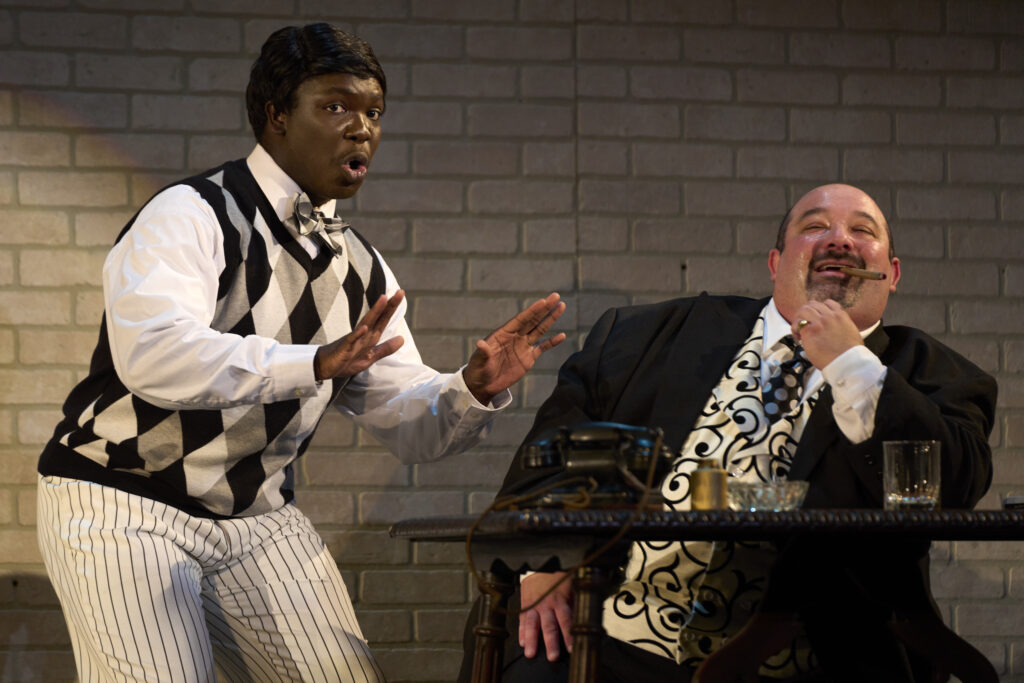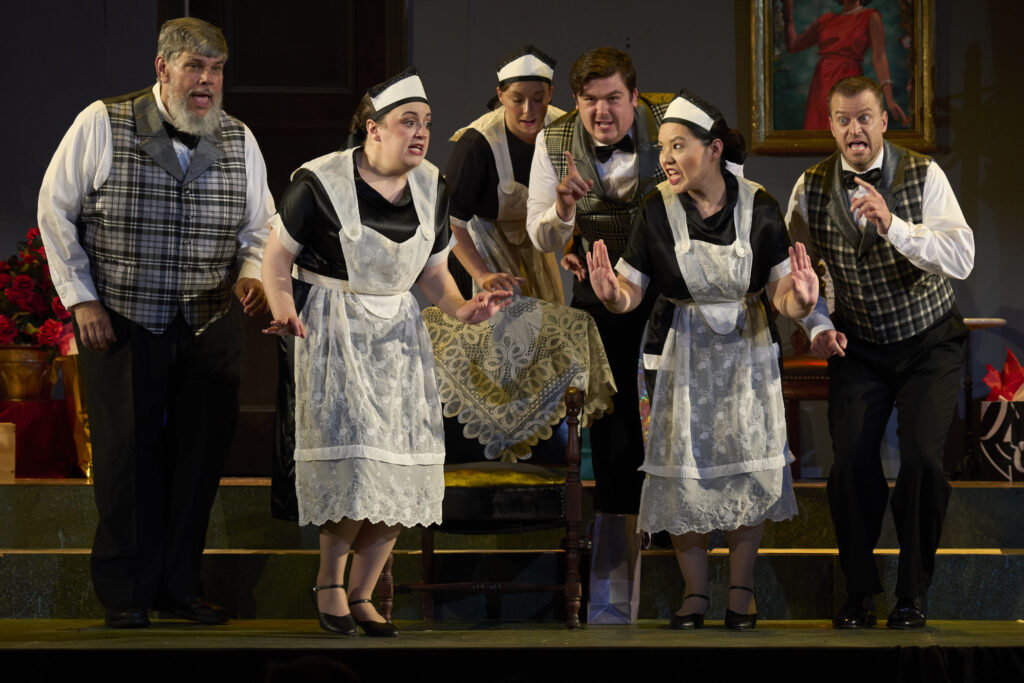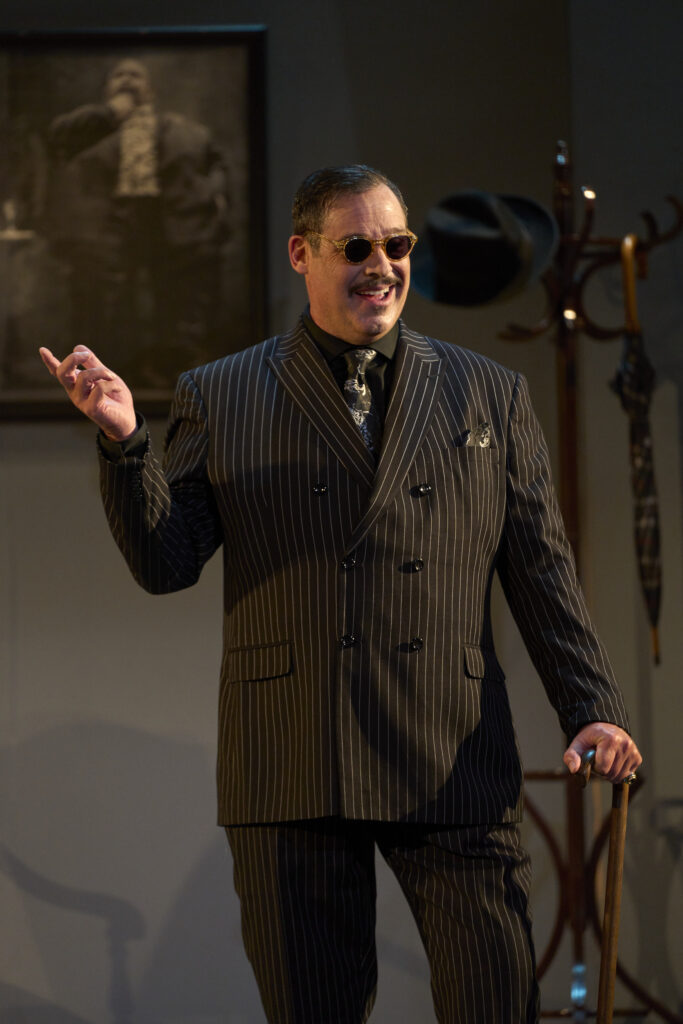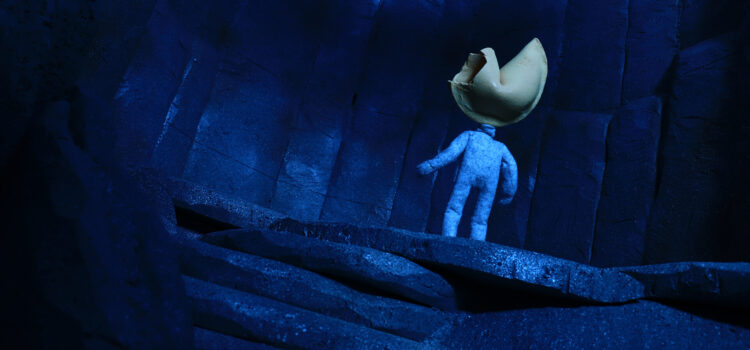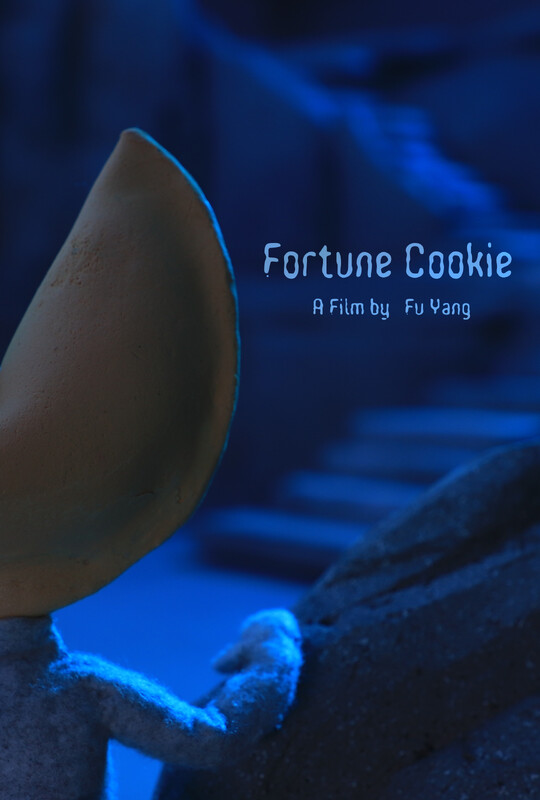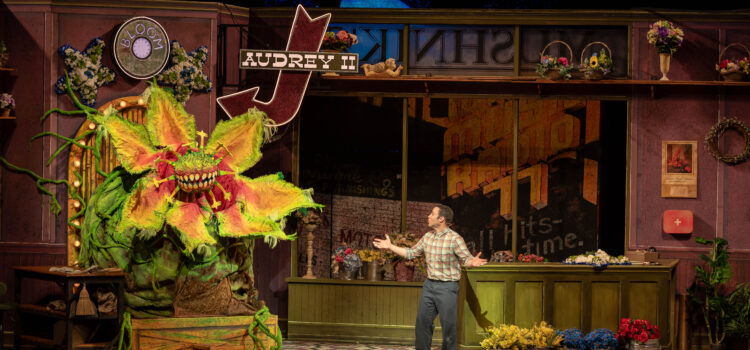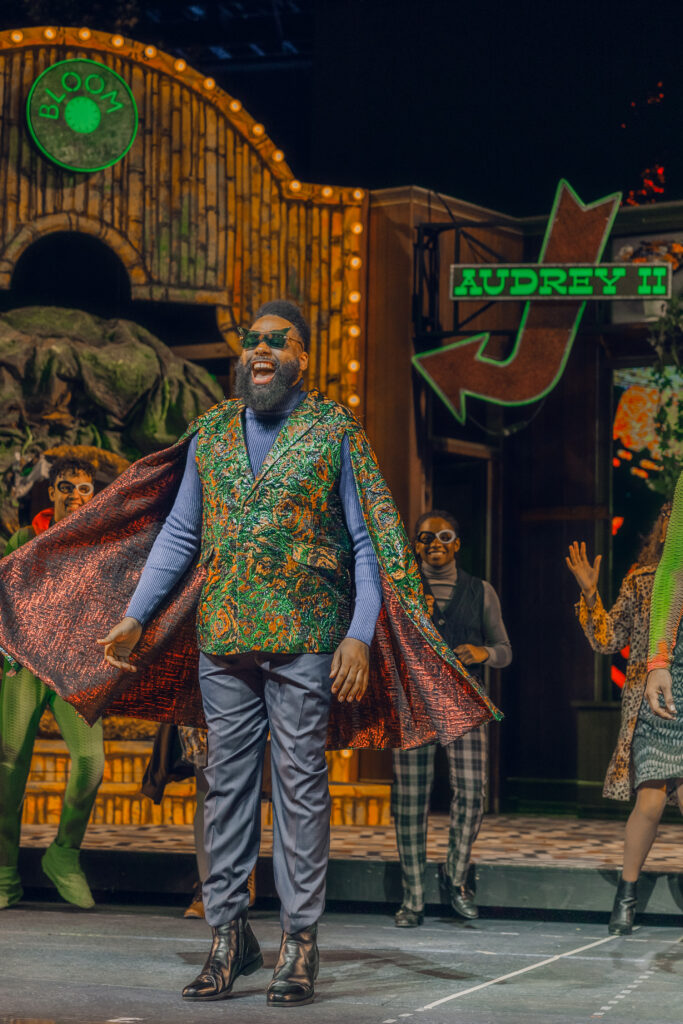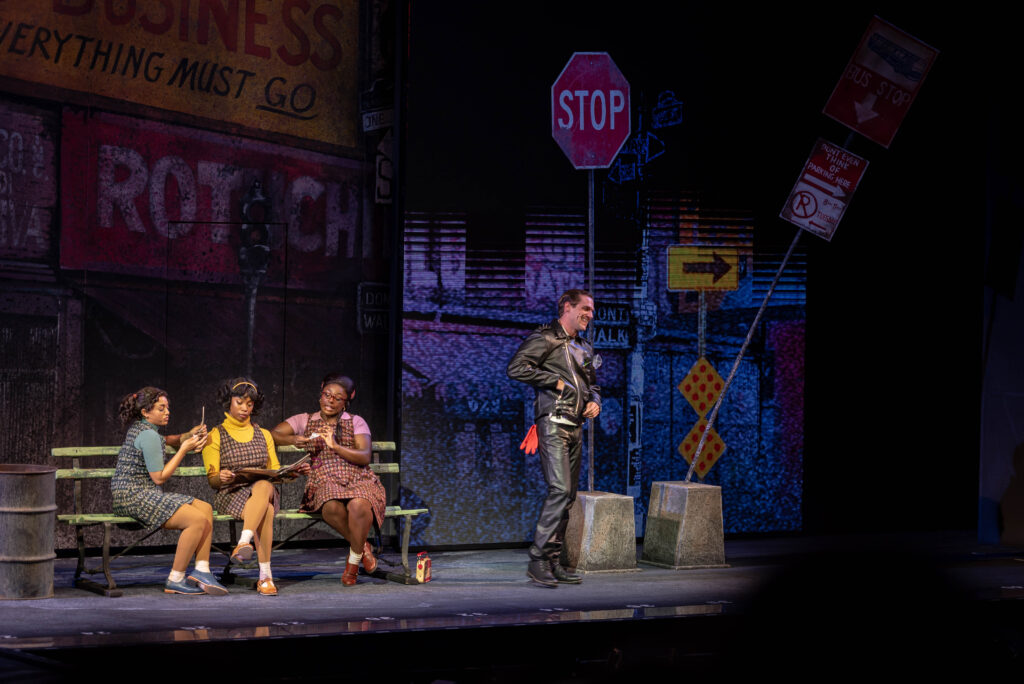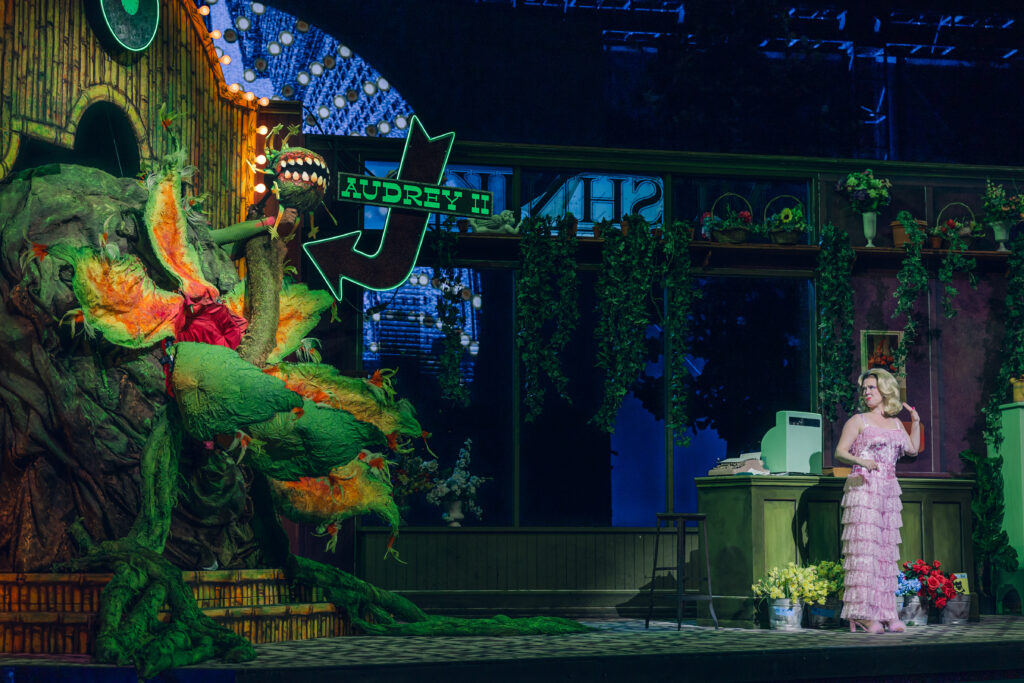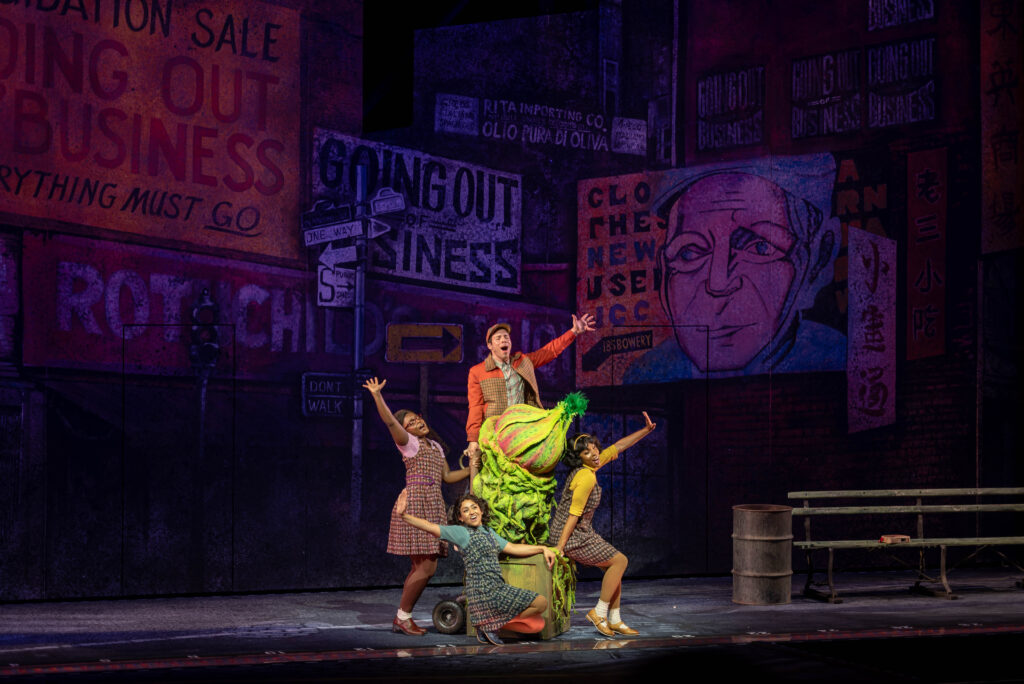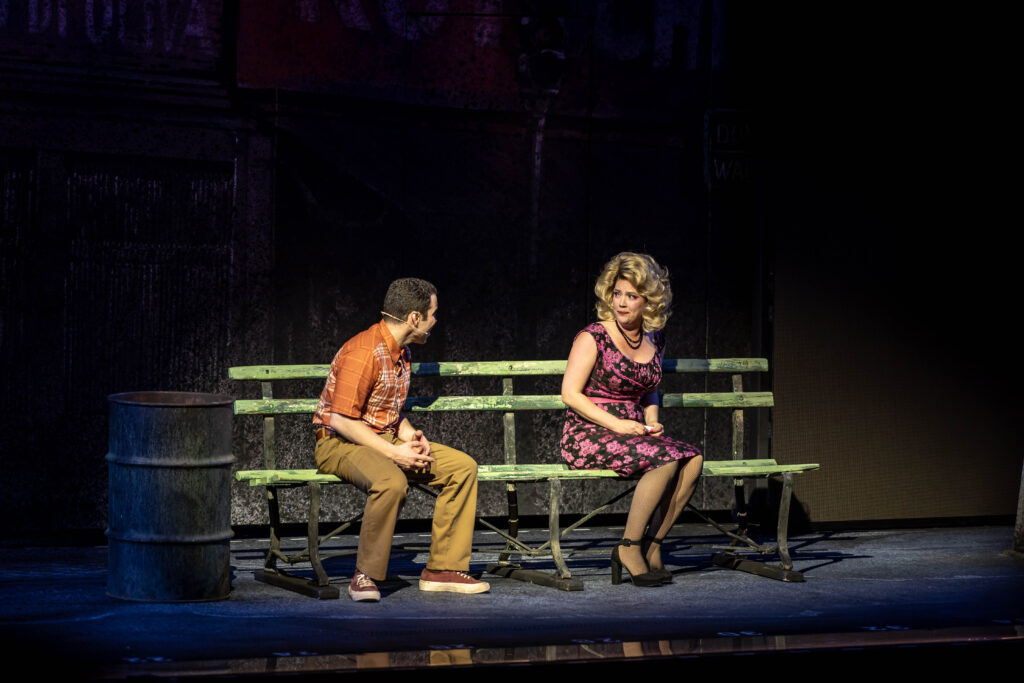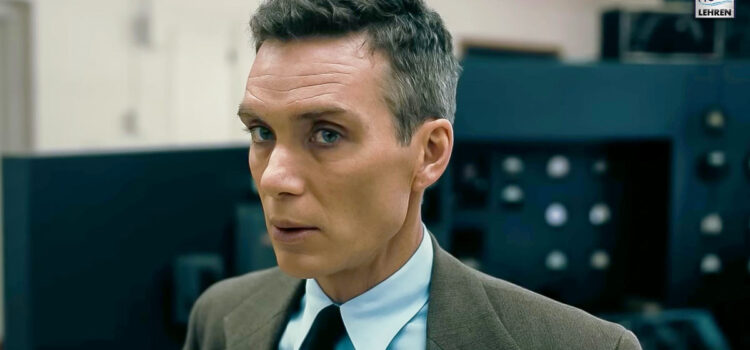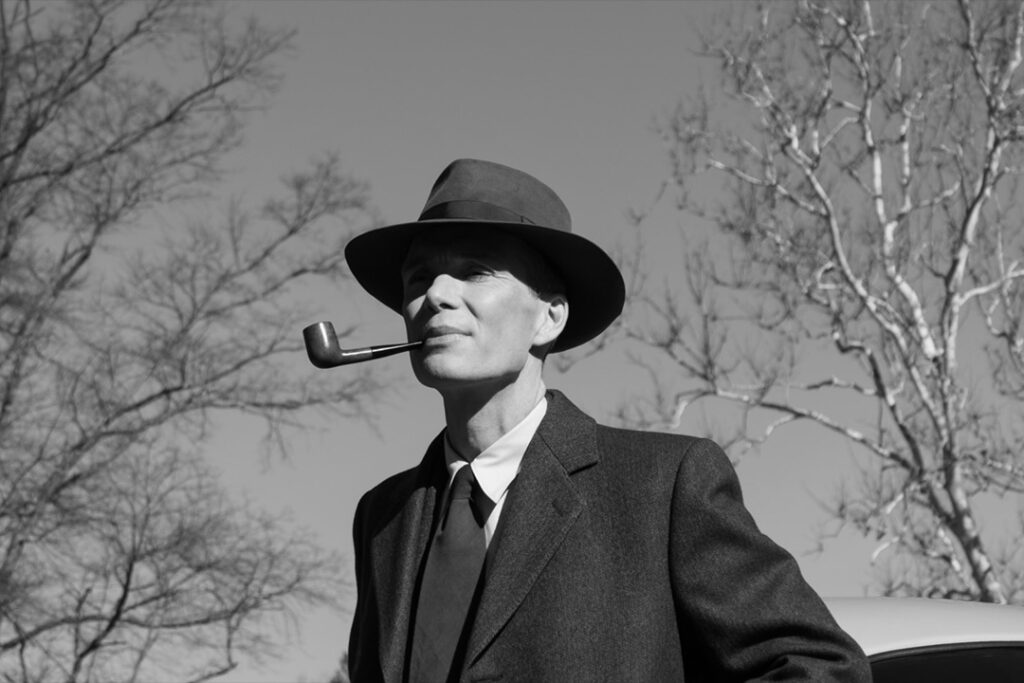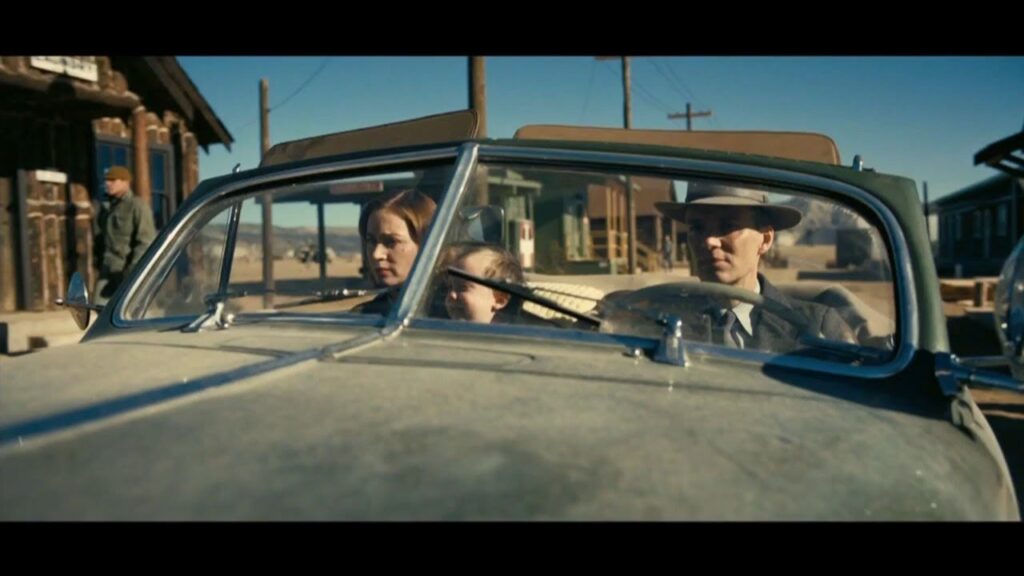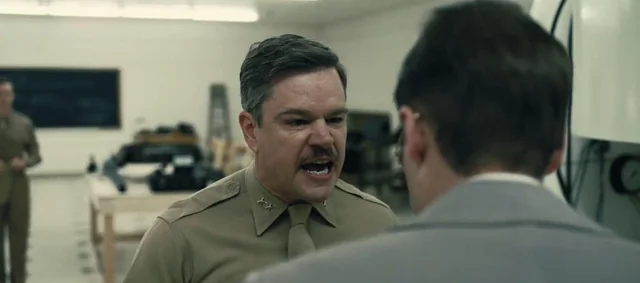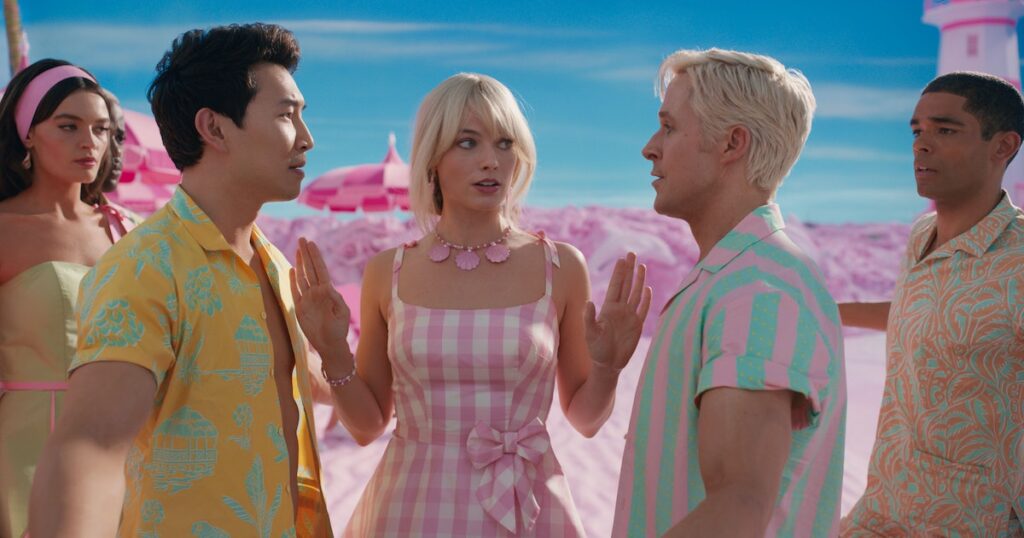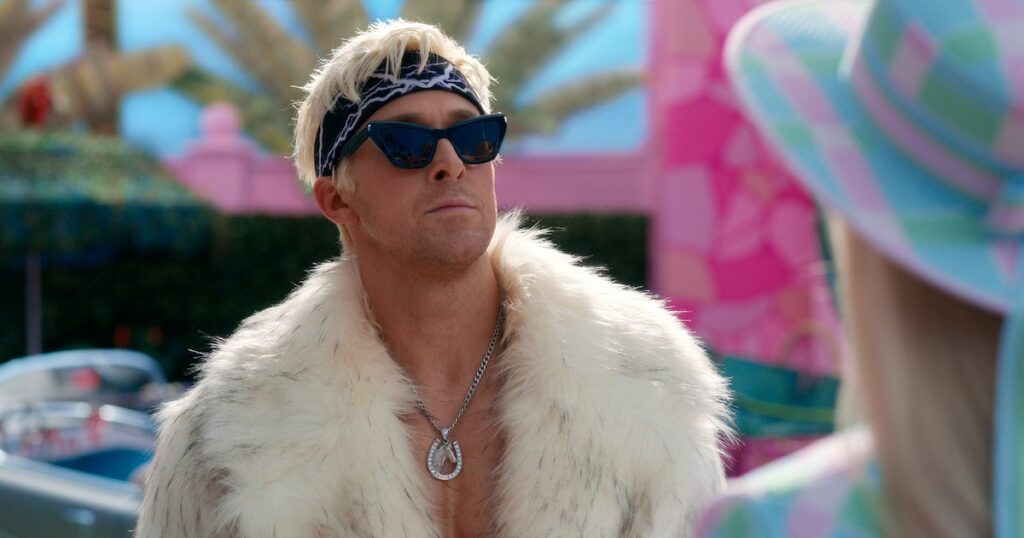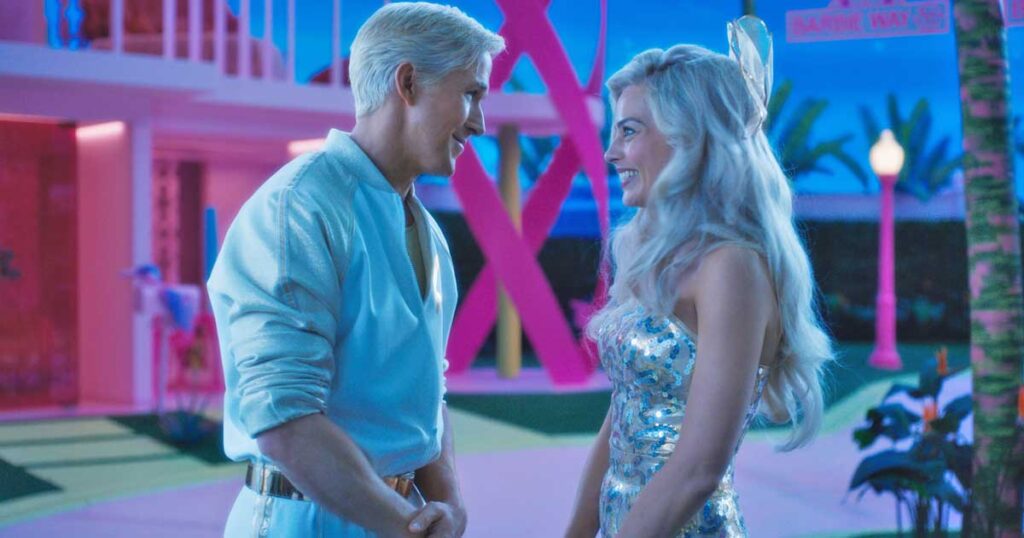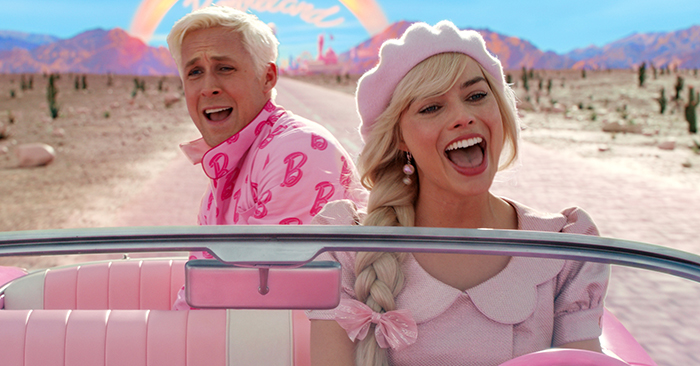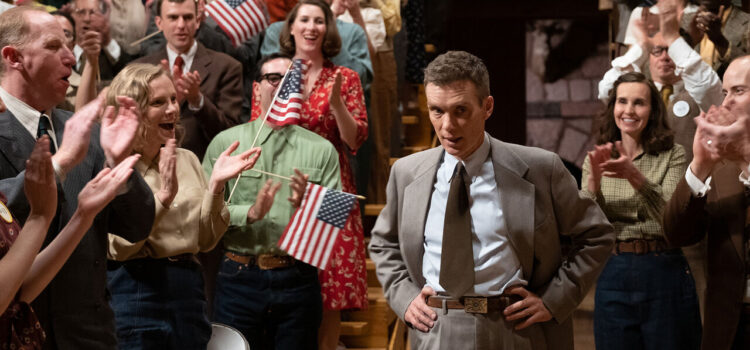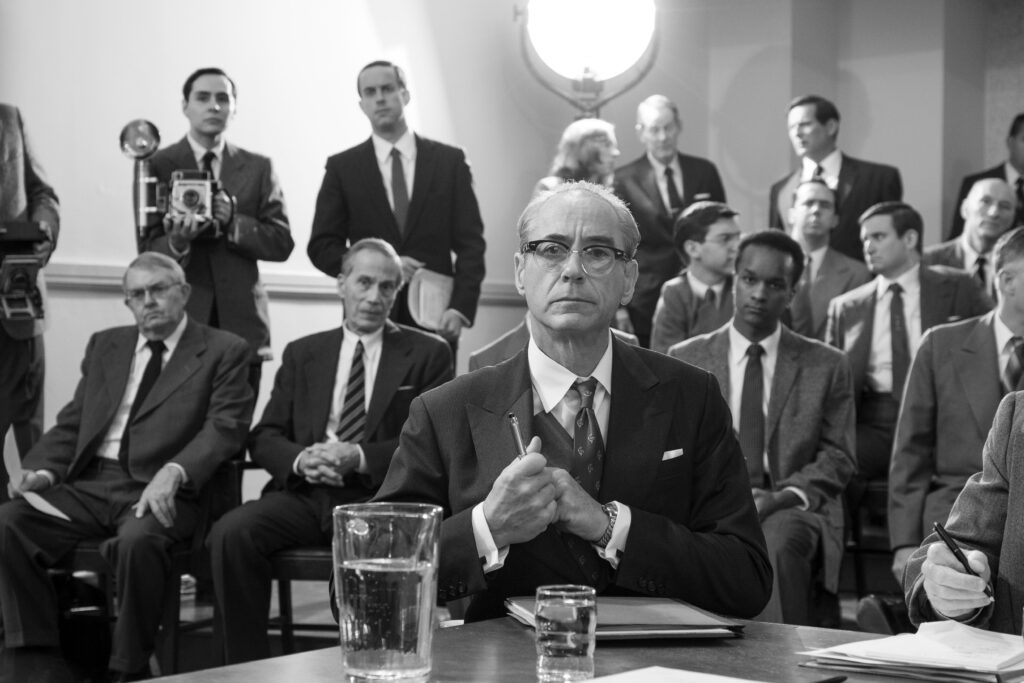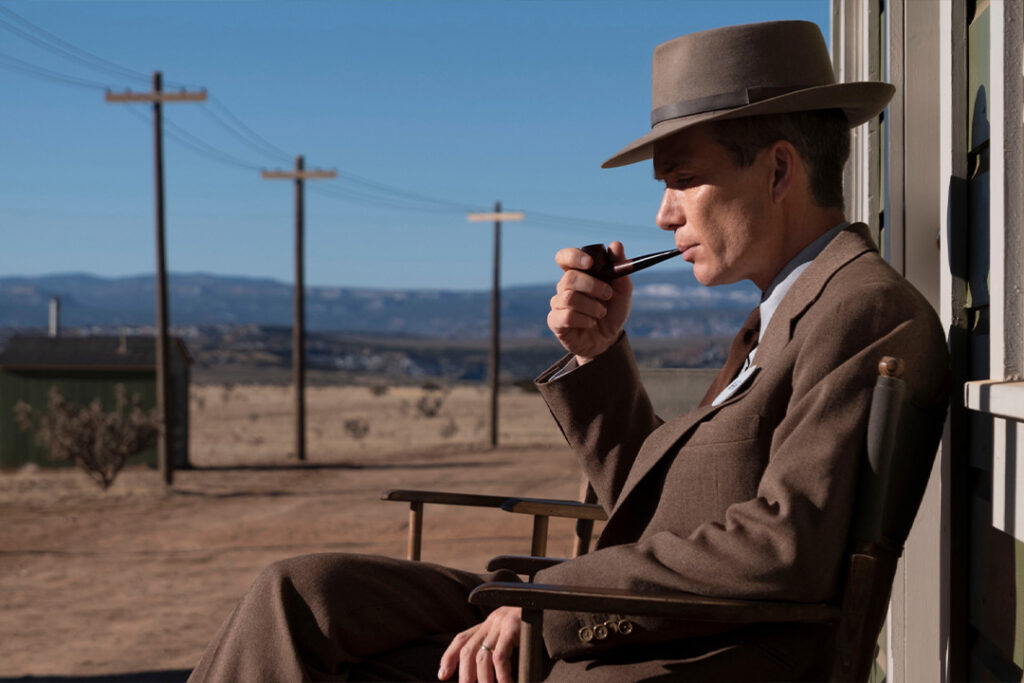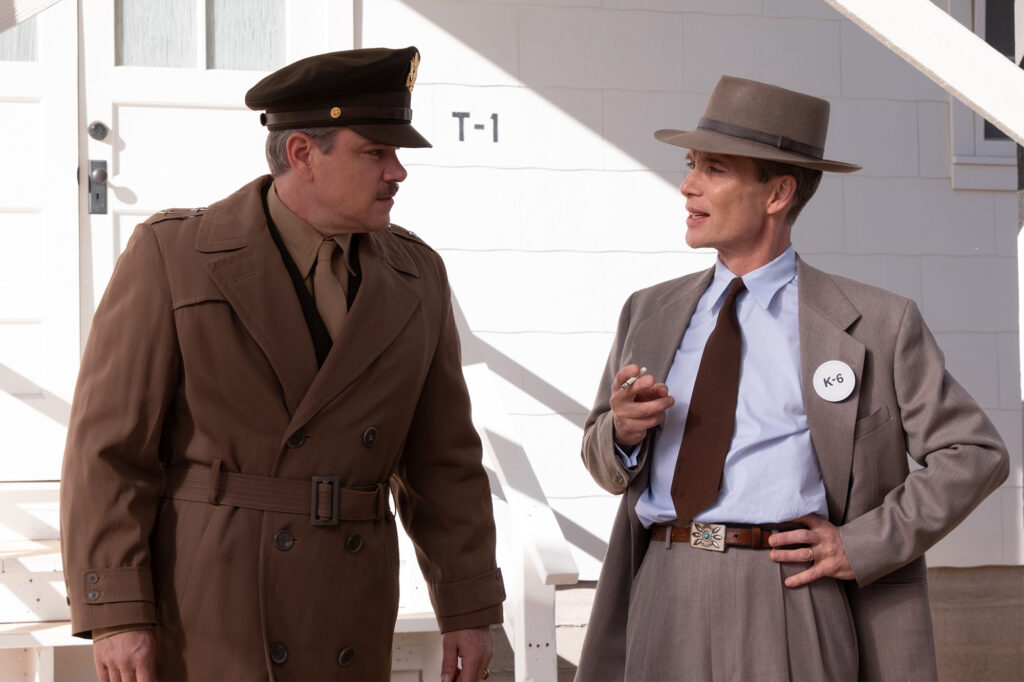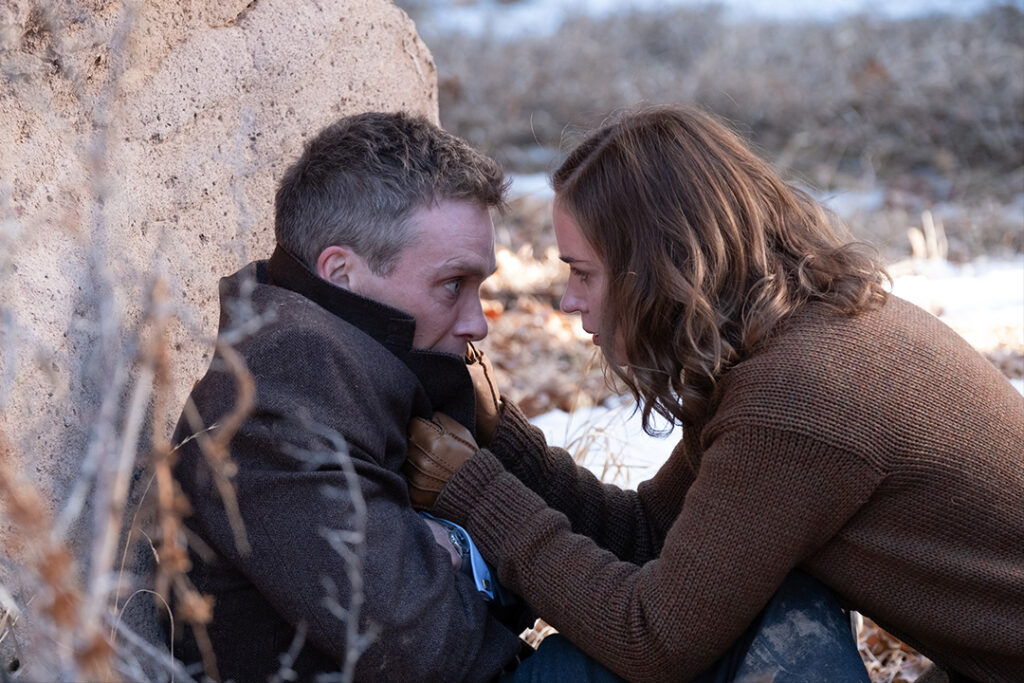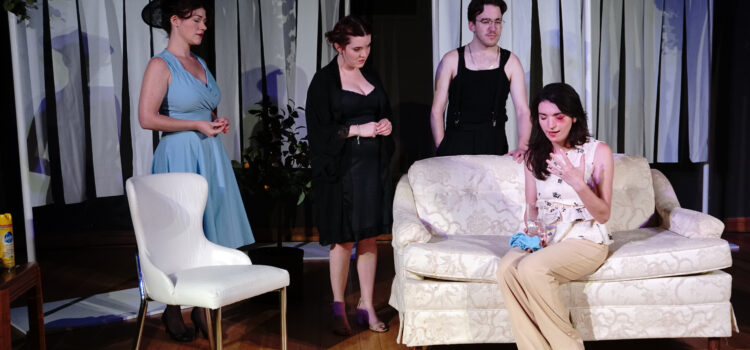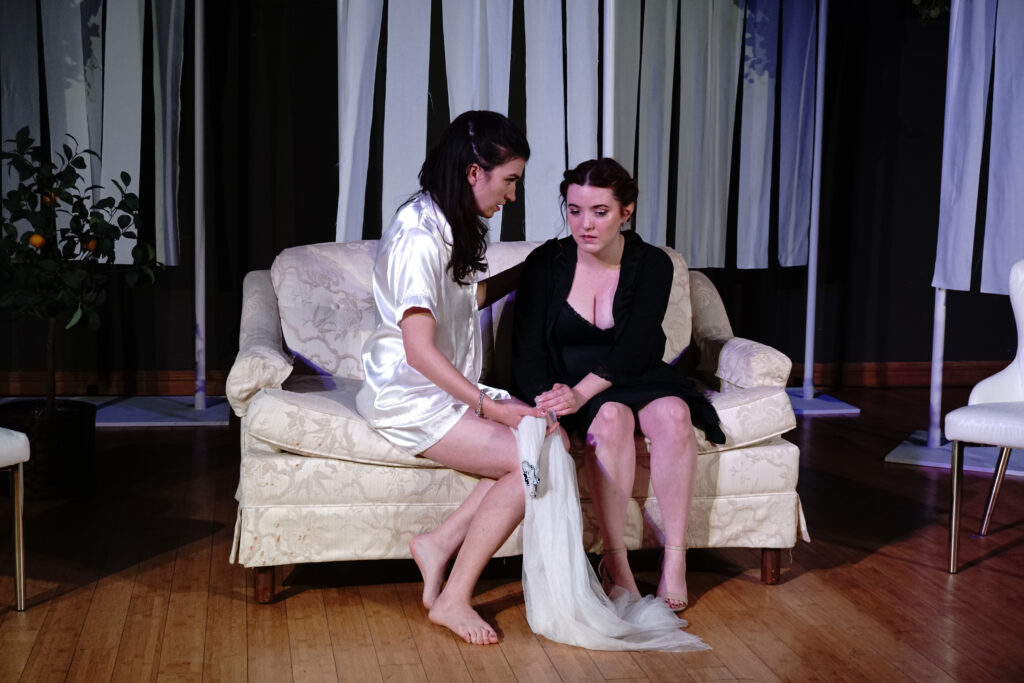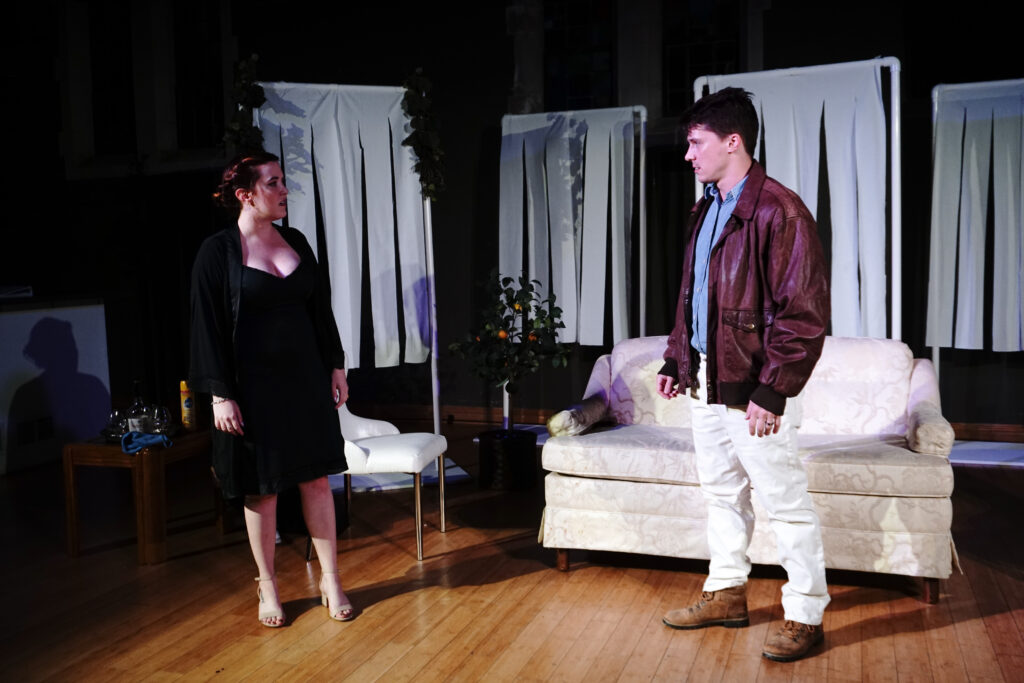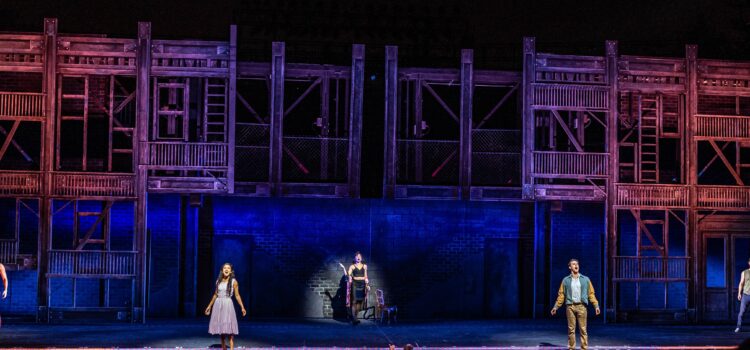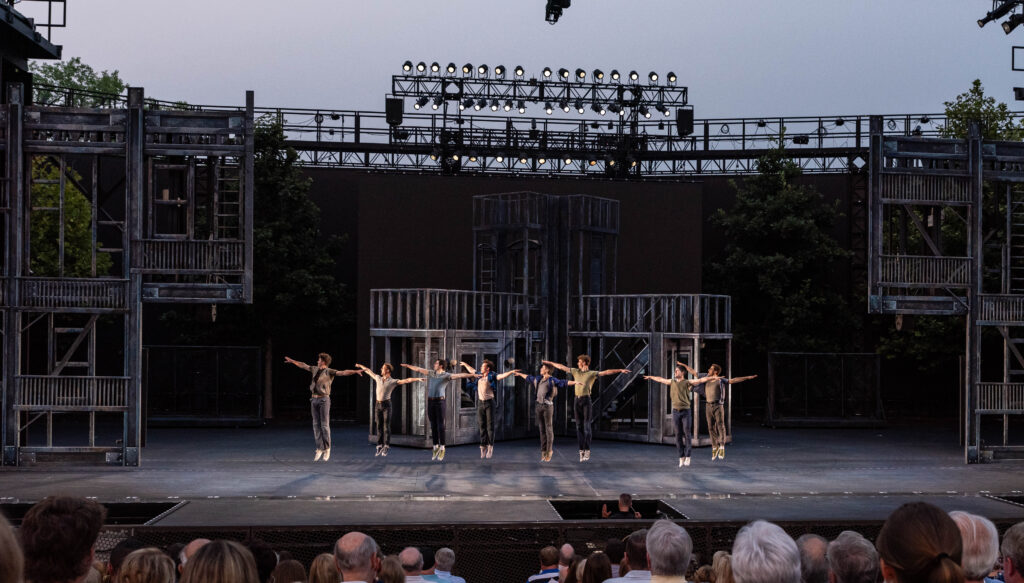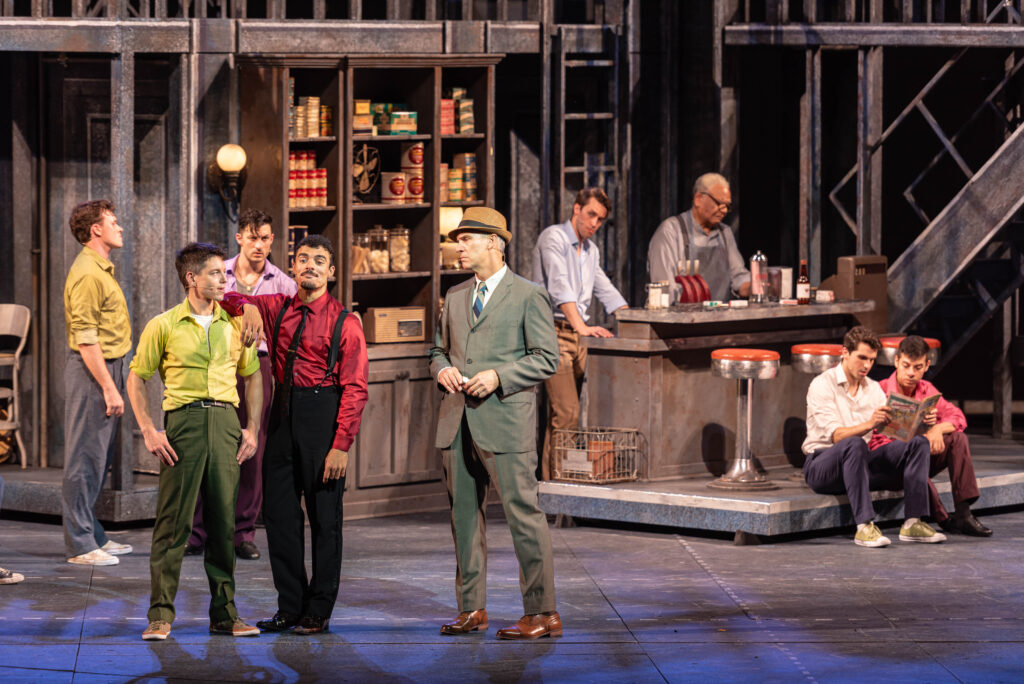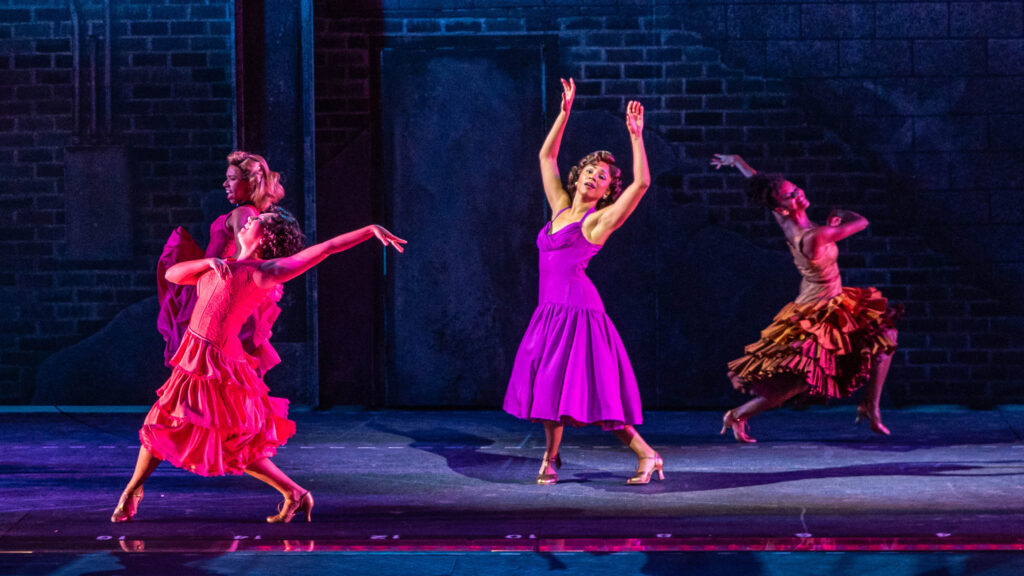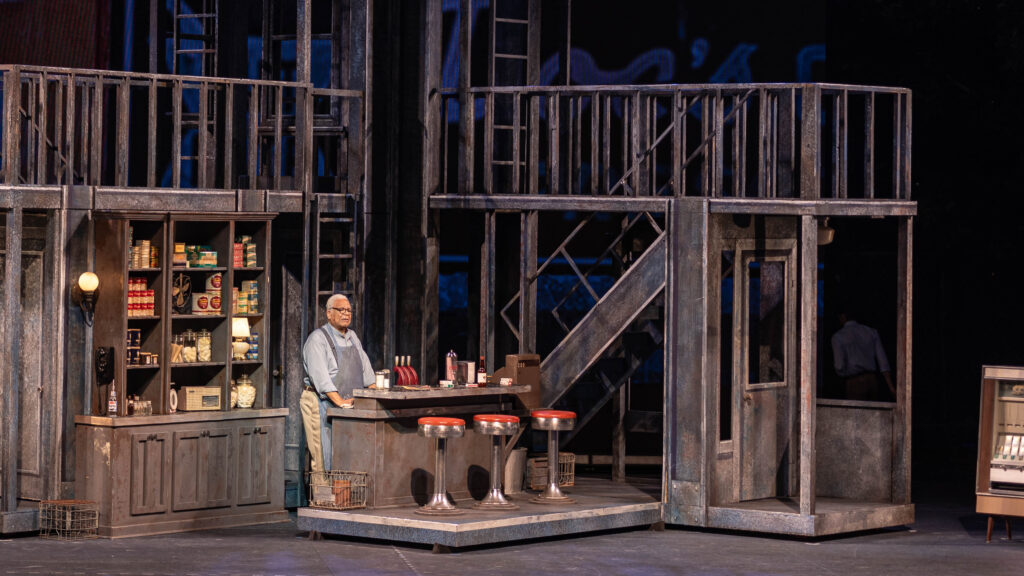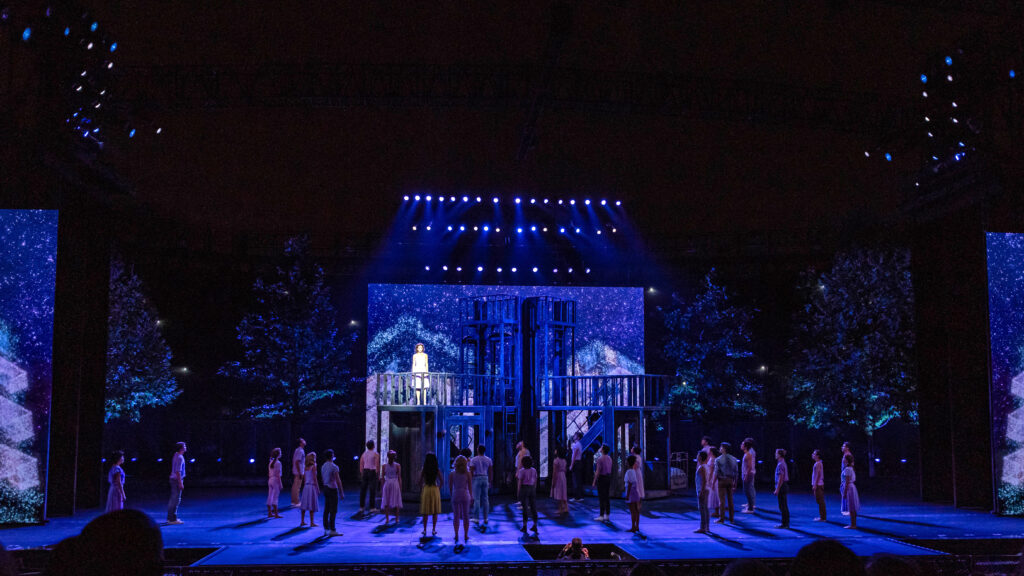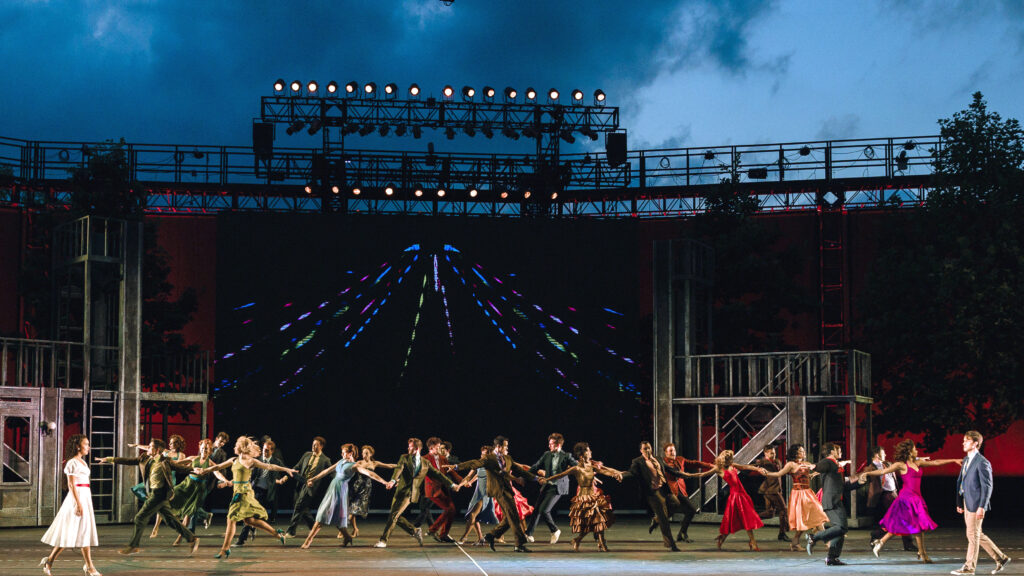By Lynn Venhaus
Noteworthy for its fleet-footed cast and flawless execution, the rip-roaring romp “Clue” is a winning combination at Stages St. Louis.
In its first non-musical presentation since 1989, the company strikes comedic gold with a farcical whip-smart whodunit patterned after the classic murder mystery board game and based on the 1985 movie that has blackmail on the menu. I haven’t laughed this hard at live theater in a long time.
Is Professor Plum the guilty one with the candlestick in the Library or Miss Scarlet with the rope in the Ballroom? We will find out what really happened in this briskly paced 90-minute escapade that connects the charades, deceptions, and secret passageways during an unusual dinner party.
The hilarious hijinks kick off on a dark and stormy night in 1954, in a well-appointed Boddy Manor, located in a remote area of New England.
As the oddball characters cavort through the mansion’s rooms and corridors, this exceptional quick-witted ensemble shows why each performer is at the top of their game, deftly demonstrating skills in slapstick and impeccable comic timing. Together, they are a finely tuned troupe, zany like the original Monty Python’s Flying Circus in movement and delivery. Let the silly walks begin!
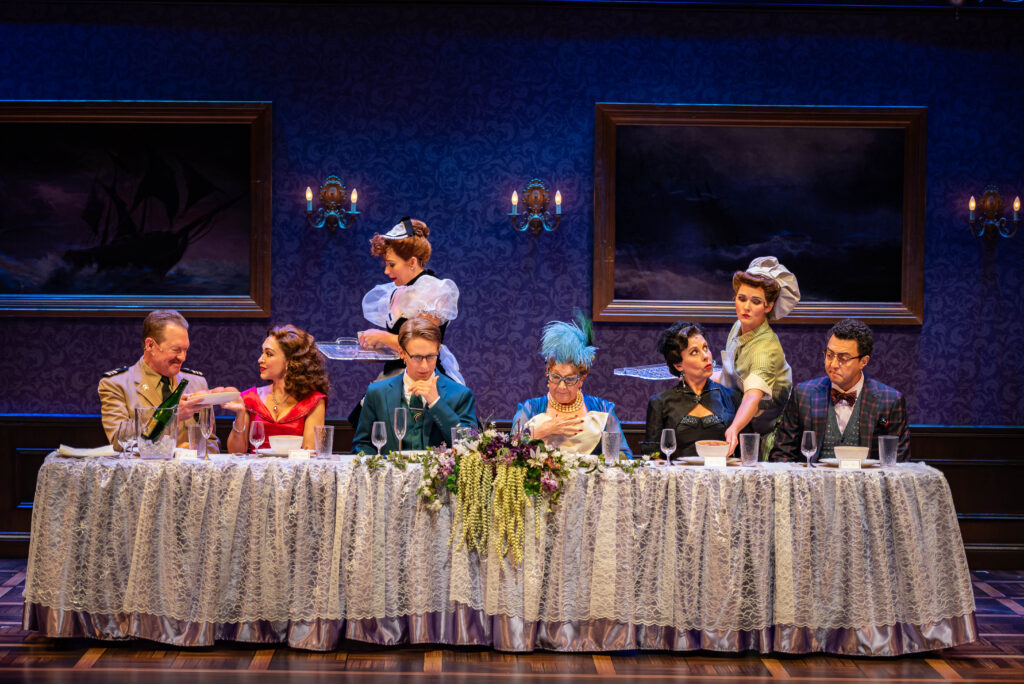
The six suspects are named according to the familiar game designed by Anthony E. Pratt and first manufactured by Waddington’s in England in 1949. Updated over the years, the current American edition, labeled “classic detective game,” is published by Hasbro, which bought the franchise from Parker Brothers in 1992.
The players’ task is to determine who murdered the game’s victim, in what room the crime took place, and which weapon was used, with cards and miniature props divvied up. Each player, representing a token color, takes on the role of either Colonel Mustard, Mr. Green, Mrs. Peacock, Professor Plum, Miss Scarlett, or Mrs. White, rolls the dice to move around the nine rooms, and collects clues to deduce the correct answer (which are secretly placed in a special solution envelope).
This stage play version, first performed in 2019, was written by Sandy Rustin, whose “The Cottage” opened on Broadway this summer. She adapted the screenplay by Jonathan Lynn (“My Cousin Vinny”), who also directed the movie.
The 1985 film, with Tim Curry playing the butler, was marketed with the gimmick of three different endings, and this version seems to jumble the endings’ best parts – wisely keeping the robustly delivered last line. New material was added by Hunter Foster and Eric Price.
As part of the merry menagerie, Mr. Boddy is the host who has been blackmailing the other dinner guests for years. Jeff Cummings is appropriately condescending and threatening, handing out gift-wrapped weapons to each, spelling out the dangers ahead. When he winds up dead, they become suspects. Their color-coded names are aliases, assigned to prevent real identities being exposed. It doesn’t appear that they are that innocent, and the plot thickens (insert menacing laugh here).
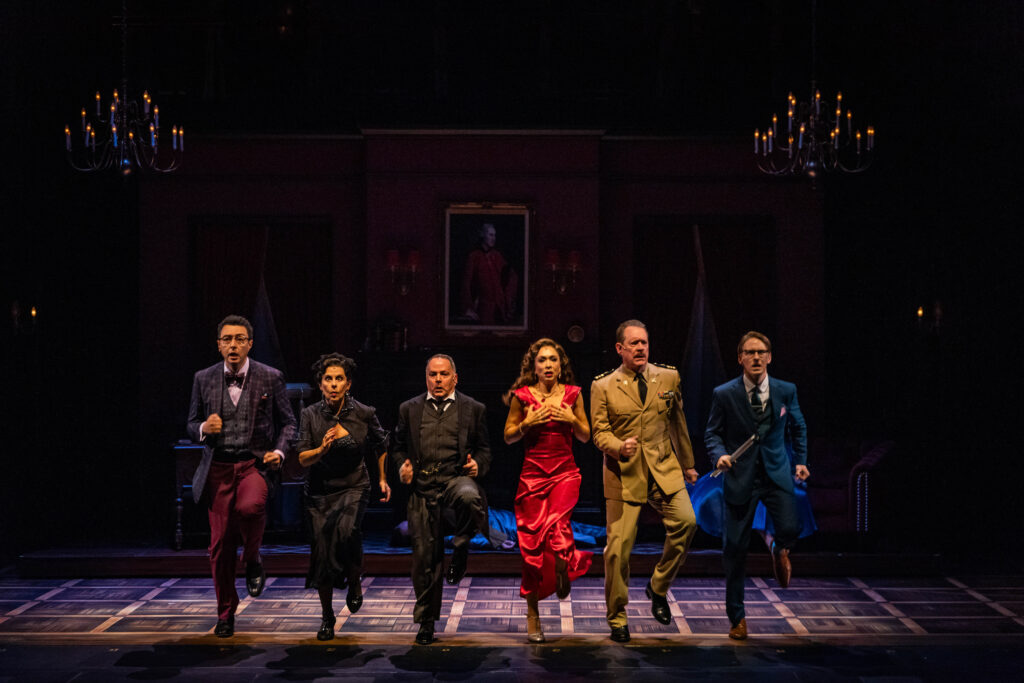
In a virtuoso performance, Mark Price tickles the funny bone as the butler Wadsworth, a master manipulator who seems to be putting the puzzle together, but whose antics question everything we’ve seen and heard. With his rapid back-and-forth delivery and devil-may-care spirit dialed to 11, he is physically reminiscent of a younger Robin Williams in “Mork and Mindy.” He nimbly seizes control of every scene in the second act, earning breakout applause, and has the audience howling with laughter.
A Broadway veteran, Price is reprising his role from the Paper Mill Playhouse in New Jersey production in January 2022, postponed from a planned bow in ’20, delayed by the pandemic. The original direction by Casey Hushion is noted in the program, and this production is directed with tremendous zeal by Steve Bebout.
Bebout highlights each character’s eccentricities and keeps us guessing as to whodunit. The story structure isn’t as dependent on the characters as it is on the performances, and this cast is a marvel of perpetual motion and goofy quirks to keep us interested.
Could it be the self-important Mrs. Peacock, married to a U.S. senator accused of taking bribes? Flamboyant in blue, Zoe Vonder Haar struts around in fine fashion, exaggerating slurping soup and putting on airs.
Or is it the vampy Miss Scarlett, a smooth operator who runs an underground brothel in Washington D.C.? Diana DeGarmo, who has already impressed at Stages in “Always… Patsy Cline” and “Aida,” continues her hot streak, sashaying in a satiny red gown, sultry attitude to match.
Or the third suspicious woman, Tari Kelly as dramatic Mrs. White, who claims she is innocent in the death of her nuclear physicist husband. However, this international woman of mystery is hiding other secrets and motives, giving off a black widow vibe.
The men project peculiarities and appear not to be very smart, even Professor Plum, whose fall from grace includes a patient’s death. Looking all stuffed-shirt with purple bowtie, Graham Stevens is the annoying agitator.

As Colonel Mustard, in his medal-detailed military jacket, David Hess seems clueless and not in sync with anyone else, evoking laughs through his obvious befuddlement.
.
Mr. Green, who seems rather strait-laced and buttoned-up, has a terrific reveal sequence that is not worth spoiling, for Charlie Franklin brings the house down as this clever chameleon.
The help is mischievous and mystifying, with Lari White sassy and sexy in a skimpy French maid outfit, affecting a spot-on accent, too, and Leah Berry funny as the demanding, no-nonsense cook who doesn’t suffer fools and knows knife skills.
Cameron Jamarr Davis conveys authority and reliability as “The Cop” among other roles, and Cummings re-appears in minor parts as well.
As outstanding as the cast is, the production’s artisans have matched their vigor. Lee Savage’s production design creates rooms Agatha Christie and Sherlock Holmes would have been comfortable in, while lighting designer Sean M. Savoie’s expert shades of illumination provide key shadows and moods. Costume designer Brad Musgrove has captured each character’s personality through a color palette that defines their attire and accessories. Sound designer Beef Gratz’s superb atmospheric contributions make sounds ranging from thunderstorms to creaking doors an integral part of the story.
The zest evident in presentation is this show’s most attractive quality, the sheer thrill of watching a high-wire act without a net. Stages St. Louis leaves us smiling on a summer night, and I’m still chuckling reminiscing about what I saw.
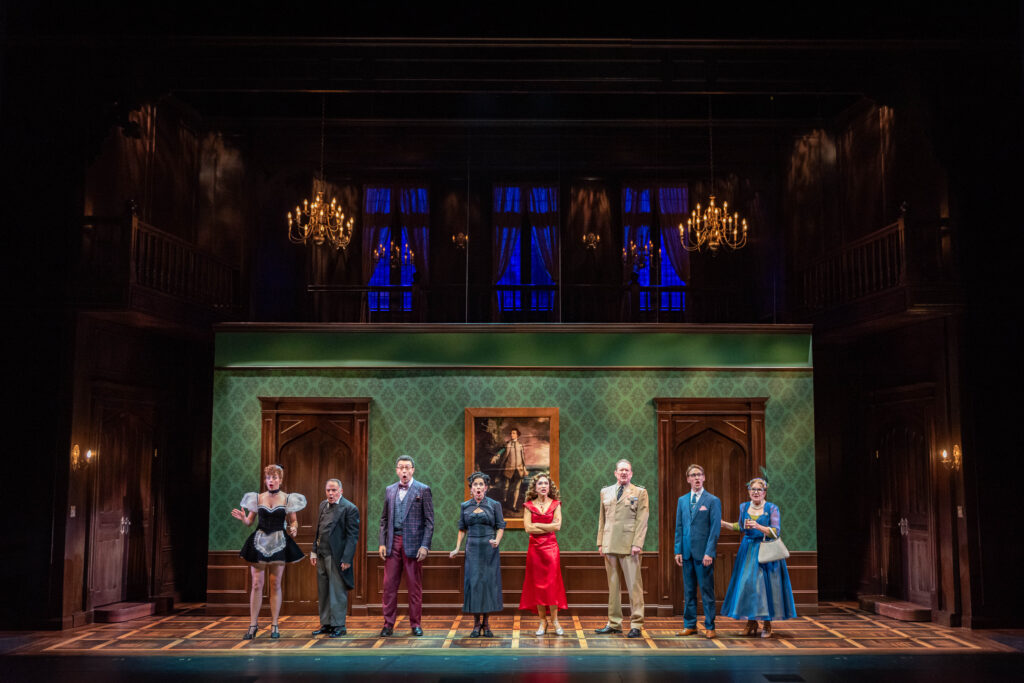
Stages St. Louis presents “Clue” from July 21 (previews) through Aug. 20 in the Ross Family Theatre at the Kirkwood Performing Arts Center, 210 E. Monroe St., in Kirkwood, Mo. For more information, visit: https://stagesstlouis.org.
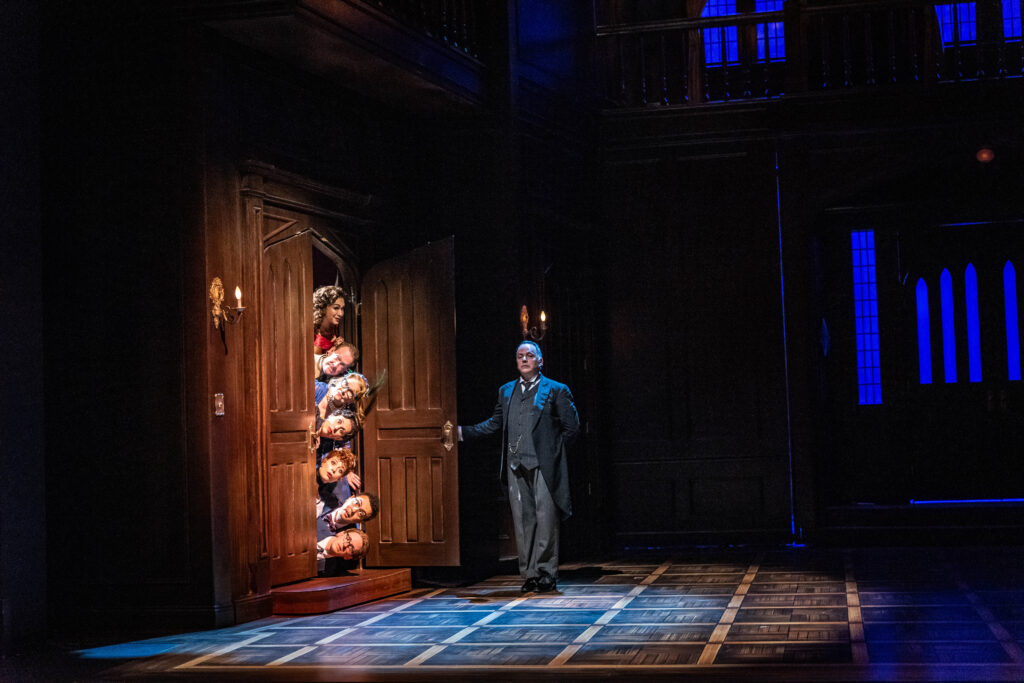
.

